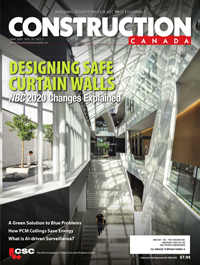How to evaluate and manage post-tensioned concrete
Management strategies for post-tensioned structures
Once the condition of a post-tensioned structure is understood, the next step is implementing a strategy to manage the post-tensioning system over the structure’s service life.
The most effective way to manage deterioration is to mitigate it. In a study conducted by this author, 95 per cent of post-tensioned failures in parking decks and 50 per cent in building structures were determined to be the result of in-service conditions that could have been avoided with proper maintenance and operational protocols. (This information was included in C. Fulton and S. Trepanier’s study “Dispelling the Myth About Unbonded Post-Tensioned Buildings,” published in the August 2015 issue of PTI Journal.) These practices include implementing preventative maintenance programs to limit moisture ingress, such as maintaining waterproofing components (e.g. membranes, expansion joints, and building envelope seals), replacing deteriorated grout plugs and ensuring adequate drainage, and implementing protocols to prevent mechanical damage to tendons (i.e. requiring service contractors to scan slabs prior to coring, fastening through, or removing concrete).
If deterioration has already begun, techniques such as tendon drying, re-greasing, injecting with an epoxy resin, and cathodic protection of anchorages can be introduced to limit further progression.
In cases when tendon failure has already resulted in reduction in load-carrying capacity, review of the structural analysis in conjunction with engineering judgement is used to assess the need for repair. Repairs should be performed as required to maintain the structure in a safe and serviceable condition. A licensed design professional, along with a qualified post-tensioning contractor, must be engaged for this complex work, as it can be dangerous if improperly executed. Repairs typically involve removing and replacing sections or full-lengths of strands.
Ongoing evaluation and monitoring is essential to tracking the rate of post-tensioning deterioration and the effectiveness of any implemented measures, as this allows management strategies to be adjusted as needed. The frequency and extent of ongoing evaluation is based on engineering judgement, consideration of the rate and extent of deterioration previously observed, and the tolerable risk level.
Conclusion
Post-tensioned structures have specific deterioration characteristics and require specialized evaluation techniques in order to gain a true understanding of the structural condition. With a number of available evaluation techniques, it is the engineer’s responsibility to develop an appropriate evaluation methodology based on the specific conditions for each structure. With the implementation of proper evaluation and management practices, engineers and owners can maximize a post-tensioned structure’s potential, enhance property value, and ensure a safe and durable structure throughout its service life.
Christopher Fulton, P.Eng., is a project manager and post-tensioning practice leader at WSP Group in Hamilton. He is an active member of the Post-tensioning Institute (PTI) DC-80 committee for the repair, rehabilitation, and strengthening of unbonded post-tensioning. Fulton has six years of experience in the evaluation and repair of post-tensioned slabs and has performed this work in various cities across North America, including Toronto, Washington D.C., and Chicago. He can be reached via e-mail at christopher.fulton@wsp.com.







